California’s Landmark Plastics Law Invites More Innovation from Industry


California’s new Plastic Pollution Prevention and Packaging Producer Responsibility Act (Senate Bill 54) represents an alliteration of good news for environmentalism in the U.S. According to the Associated Press, the act takes the “toughest” measures against the proliferation of single-use plastics seen in the U.S.
The Golden State may well be setting itself up as another trendsetter in environmental regulation. After all, eight years ago, California was the first state to impose a statewide ban on single-use plastic bags. Since then, seven other states have followed that lead.
The law requires that by 2032 all single-use packaging and food service ware be recyclable or compostable. By that same year, industry will need to cut single-use plastic waste by one-quarter and increase the amount of plastics recycled by 65 percent. There will be accountability through CalRecycle, where plastic manufacturers will submit their plans and report annual progress. There will also be financial obligations for the industry to the tune of $500 million a year over the course of 10 years, funneled to communities that have been most negatively affected by plastic pollution.
The bill was authored by Senator Ben Allen, who in a statement explained the level of cooperation involved during the four-year process. “We knew that we needed to act,” said Allen, who chairs the California Legislature’s environmental caucus and the state senate’s environmental quality committee. “And in this time of extreme polarization in our nation, California was able to show that we can pass strong environmental legislation with bipartisan support that brought together the environmental and business communities.”
Why would businesses get behind such a costly bill?
The organizations that have been supportive of Senate Bill 54 range from nonprofits like Oceana, Ocean Conservancy and the Monterey Bay Aquarium; industry groups including the Association of Plastic Recyclers and the American Sustainable Business Network; and companies such as Seventh Generation and Waste Management.
Before the bill was passed, the American Sustainable Business Network published a statement that lays out some reasons why business interests would (and should) get behind this type of legislation. “We believe it is important to reduce plastic waste pollution and clean up our supply chain and particularly to focus on the role of single-use plastics in product packaging and incentivizing innovative packaging solutions,” the group wrote, adding that, “Reducing plastic waste will save local governments millions in disposal costs, protect our environment, drive us towards more innovative solutions and help move us towards a healthier and more sustainable economy.”
Those statements are confirmed by the overwhelming trends governing our global economies. Writing for the Harvard Business Review, Audrey Choi, Morgan Stanley’s chief sustainability officer, outlined some of those trends that are leading businesses away from single-use plastics, many of which are hard to ignore. Companies interested in reducing capital costs, for example, should pay attention to investor concerns. A 2019 report from Morgan Stanley revealed that investors are increasingly committed to sustainable solutions – finding that 85 percent of individual investors are interested in sustainable investing.
Choi also emphasized that single-use plastics represent a $100 billion annual economic value – a wasted business opportunity if all that value ends up in the trash after one use. That’s why businesses that set aside the model of single-use plastics can find an opportunity to reduce their operating costs by rethinking how products are presented to customers and shipped to retailers, Choi wrote. As regulatory bodies continue to require alignment with more climate-friendly and less polluting policies, companies that make the needed shifts are also avoiding risks to compliance. The financial penalties built into Senate Bill 54 can reach up to $50,000 a day per violation.
A plastics bill that both companies and environmental advocates can respect
Those linked to Ocean Conservancy see a big win in Senate Bill 54, because it does the vital work of decreasing the amount of single-use plastics produced. After all, based on current projections, global plastic waste may triple by 2060. In a statement promoting the bill before it was passed, Nicholas Mallos, senior director of Ocean Conservancy’s Trash Free Seas program, said, “This bill boils down to fewer plastics on shelves, and less plastic pollution in our ocean. As the country’s biggest state economy, California has the potential to lead the United States out of its plastic pollution crisis.”
Image credit: Mark Harpur via Unsplash
Solar and Energy Storage Companies Make the Case for Clean Power
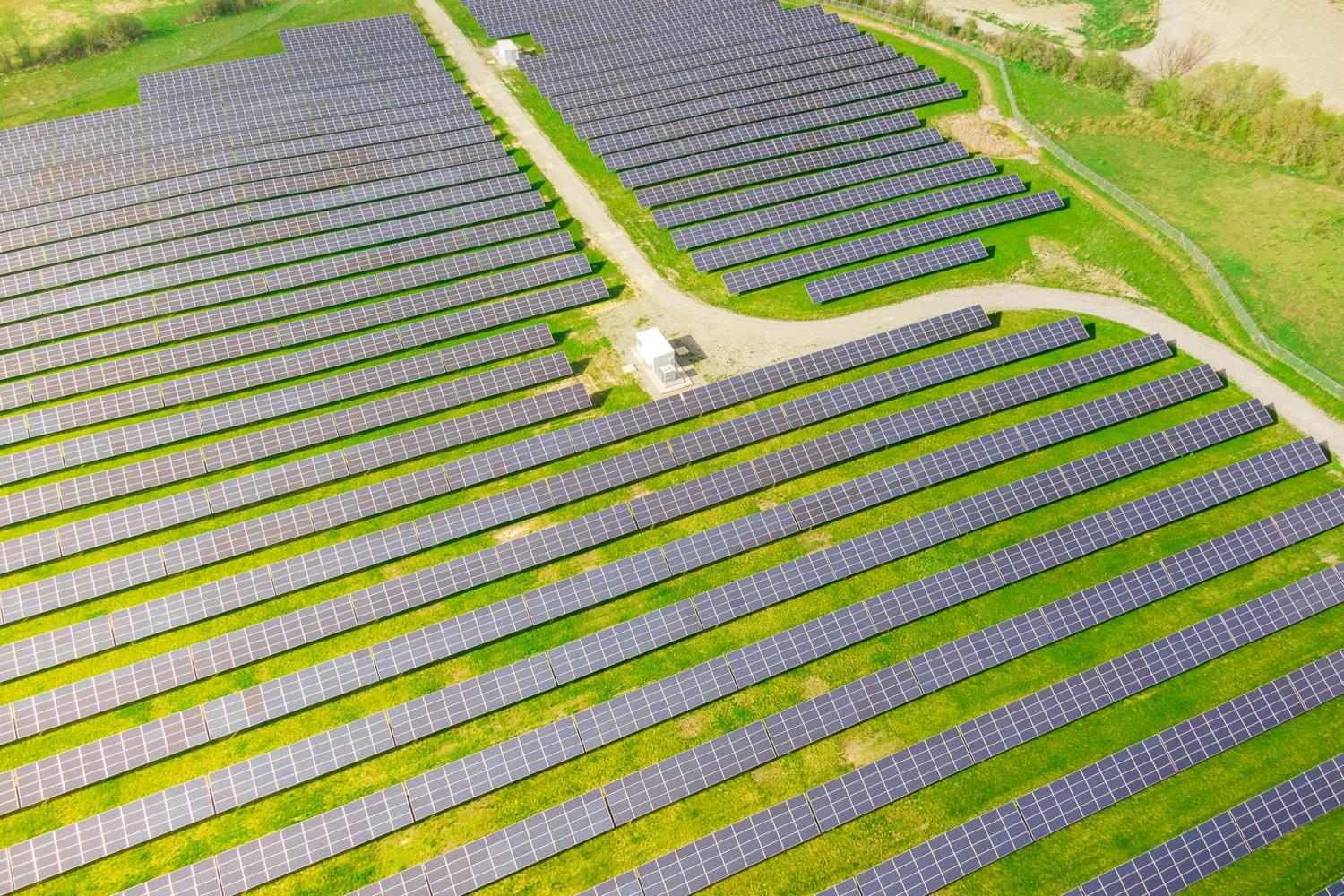
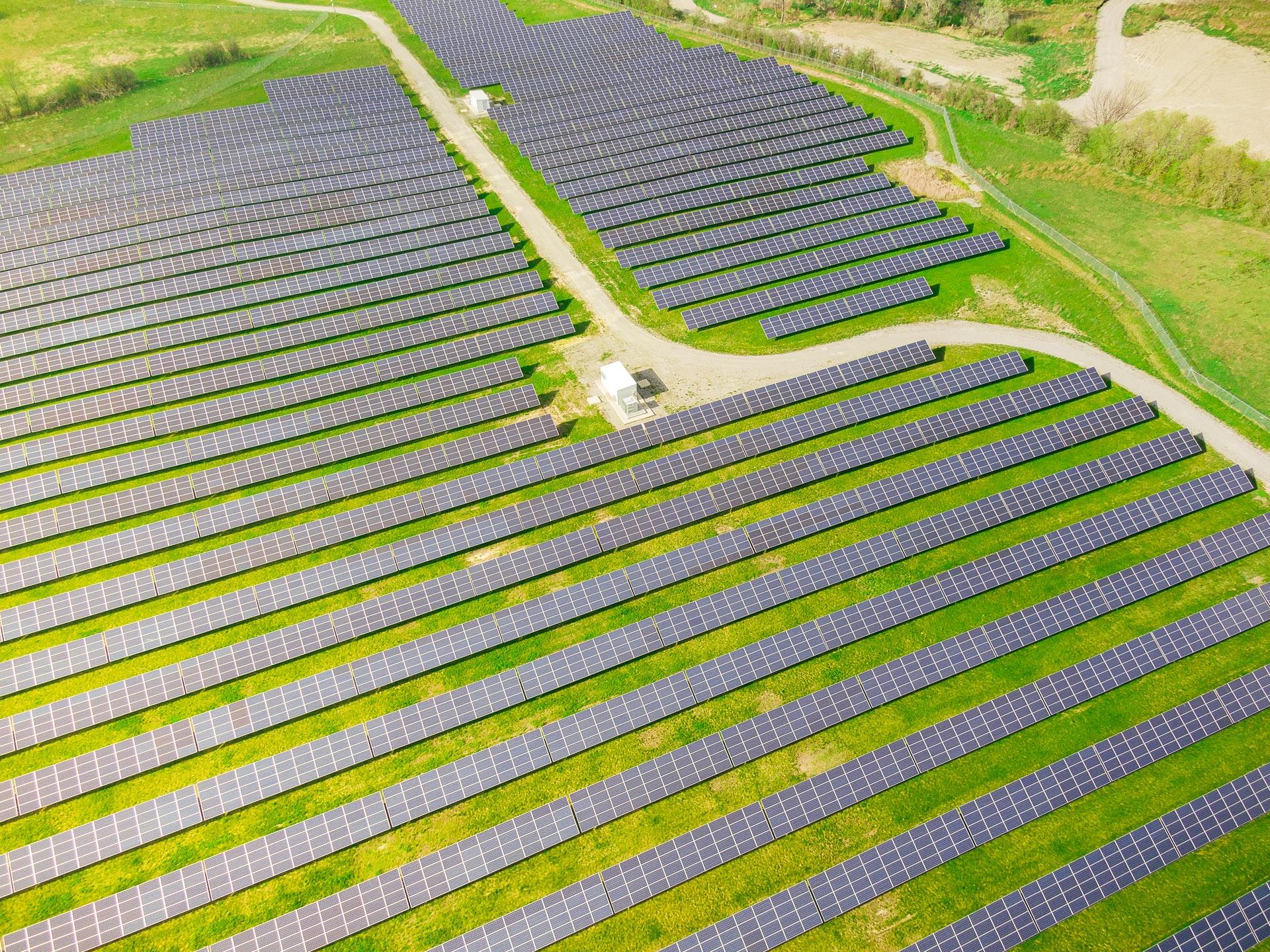
The media spotlight has been fixated on the January 6 insurrection hearings in Congress, and rightfully so. Those responsible for that history-making event should be called to account for their actions. Nevertheless, the House and Senate still have the routine matter of the reconciliation bill to take up, which provides an opportunity to support federal clean energy policy, especially for solar power and energy storage. Their decisions will directly have an impact on hundreds of businesses, tens of thousands of working Americans and the future of a livable climate on Earth
They write letters
Tuesday was a day of action for the solar and energy storage industries, aimed at convincing Congress to support their workforce through the reconciliation process. Among the activities was a letter to House Majority Leader Nancy Pelosi and Senate Majority Leader Chuck Schumer, organized by the Solar Energy Industries Association and signed by more than 400 companies in the solar and energy storage industries.
“Ongoing inflation and the global energy crisis demand that lawmakers finally get these policies over the finish line to deliver critical cost-savings for families,” said SEIA President and CEO Abigail Ross Hoppe. “America has the means to become more energy and climate secure by putting people to work producing and deploying clean energy here at home, and now leaders must recognize the urgency of the moment by passing this legislation.”
Among the items supported by SEIA are: an extension of the solar investment tax credit (ITC), which has been instrumental in the growth of the U.S. solar industry; a separate credit for energy storage, recognizing that energy storage systems are assets on their own account; and, manufacturing incentives, as outlined in the Solar Energy Manufacturing for America Act introduced by Senator Jon Ossoff (D-Georgia). The bill has already passed the House and is waiting for approval in the Senate.
The letter itself was short and to the point.
“The solar, storage and other clean energy industries stand ready to help build a cleaner, cheaper, and more secure domestic energy future for all Americans. Please pass the tools in reconciliation to help us make that possible. It’s time to get this done,” the letter read in full.
What’s holding things up?
With the Democratic Party holding a majority in the House and Senate, along with the Presidency, it is fair to ask why Congress can’t do more to support the U.S. solar industry and other clean energy sectors. After all, President Joe Biden swept into office as the “climate president,” with big plans to speed up decarbonization.
The answer can be found in Civics 101. The Democrats can pass any bill they want in the House without any support from Republican members. However, they only have a razor-thin majority in the Senate. In order to pass bills in the Senate, they need Republican senators to step up and support them. That’s not going to happen under the current state of affairs. Republicans hold the minority position in the Senate, but they still have enough seats to block legislation through the filibuster. The passage of the bipartisan infrastructure bill last fall was the exception that proved the rule.
The Democrats do have one alternative. They can insert climate-friendly provisions in the budget, through the reconciliation process. That only requires a simple majority in the Senate, which the Democrats have. However, that will only work if all 50 Senate Democrats vote together, with Vice President Kamala Harris casting the tie-breaking vote in favor.
That is do-able in some areas of policy, but not in the area of climate action. Senator Joe Manchin of West Virginia has been holding up the works. He represents fossil energy stakeholders in his home state, a group that includes his family’s coal business.
Senator Manchin’s unique position provides him with an outsize position of power, even though he represents just a tiny sliver of the U.S. population (the current population of West Virginia is about 1.8 million).
“One person familiar with the [reconciliation] negotiations said whether the climate piece gets done will depend largely on how many concessions Manchin will insist on for the fossil fuel industry,” reported Alexander Bolton of The Hill last week.
Wiggle room for clean power and energy storage in West Virginia
Bolton cited Sam Runyon, a spokesperson for Manchin, who “waved off speculation that Schumer and Manchin are close to a deal on a broader reconciliation package that would include bold proposals to tackle global warming, a top priority of Sen. Sheldon Whitehouse (D-R.I.) and other Senate Democrats.”
Added Bolton, Runyon said that “suggestions that a reconciliation deal is close are false. Senator Manchin still has serious unresolved concerns and there is a lot of work to be done before it’s conceivable that a deal can be reached he can sign onto.”
One area of potential progress is in manufacturing, where Manchin may be feeling pressure from organized labor. The United Mine Workers of America is among the labor organizations recognizing that jobs in the clean energy and energy storage industries can provide rural and underserved communities with a ladder out of the economic mess left by extractive industries when they exit local communities.
“Manchin has a proposal with Sen. Debbie Stabenow (D-Mich.) to incentivize the manufacturing of new energy technologies with investments in rural communities, and some Democratic senators feel confident the West Virginia senator will agree to a package of clean energy tax breaks,” Bolton reported.
Pressure could also be coming from clean energy stakeholders in West Virginia. The state has been slow to welcome the solar and energy storage industries, but the dam is beginning to break as new opportunities for rural economic development come into view.
West Virginia is also beginning to face the basic reality of the energy transition. Other industries are seeking opportunities to decarbonize, and they will take their business elsewhere if West Virginia fails to come through with a pipeline to clean power. In particular, other states are beginning to establish green hydrogen hubs to feed the new and growing market for sustainable hydrogen.
The generational seams are showing
The 74-year-old Manchin has also provided more fodder for an emerging conversation about the outsized influence of older Americans on climate policy, and the failure of an older generation to act with the urgency demanded of the moment.
Earlier this week, Ella Nilson of CNN reported that “more than 200 congressional staffers have sent a letter to Democratic leadership in the House and Senate, demanding they close the deal on a climate and clean energy package and warning that failure could doom younger generations.”
"We've crafted the legislation necessary to avert climate catastrophe. It's time for you to pass it," the staffers wrote, adding that “The silence on expansive climate justice policy on Capitol Hill this year has been deafening. We write to distance ourselves from your dangerous inaction."
It's fair enough to blame Republicans in Congress for voting in lockstep with fossil energy interests. After all, they could easily help pass climate legislation, with or without the cooperation of Senator Manchin.
However, the reality of the situation is that the reconciliation process is the only window of opportunity for meaningful action on federal climate policy this year. That leaves a single Democratic Senator, Joe Manchin of West Virginia, with the power to overcome Republican opposition to climate policy — or not, as the case may be.
Image credit: Derek Sutton via Unsplash
Food Insecurity Is on the Rise, with Few Solutions in Sight


The United Nations’ Food and Agriculture Organization (FAO) recently released a report that details the growing disparity in food availability and nutrition. As of 2021, roughly 828 million people, or 9.8 percent of the globe’s population, face hunger around the world. FAO says that this is the second year in a row since the start of the pandemic to see an increase in these numbers. In comparison, this percentage had remained at 8 percent from 2015 to 2019. These numbers surrounding food insecurity sting even worse when looking at why they have risen and who was affected the most.
COVID-19 exacerbated underlying issues in the global food sector
The amount of people that couldn’t afford a basic healthy diet rose from 112 million in 2019 to a whopping 3.1 billion in 2020. This is a clear indication of consumer food price inflation as a result of COVID-19. Alarms for this issue were sounded early, though, even within the first few months of the pandemic. So why was so little done to help avoid this fate?
To start, food companies’ profits have remained high during this entire period, even eclipsing those seen in previous years. Corporations that had previously coped with slowed growth suddenly took flight in the new environment and were well positioned to generate even more profits. Specifically, this has been most notable within the dairy and meat sectors in high-income countries. This trend is set to continue unless a shift is made in both trade policies and farm subsidies.
Even with such a change in policies, for the FAO it ultimately comes down to industry stakeholders and the appropriate distribution and use of the roughly $630 billion invested annually worldwide to promote agricultural production: a $630 billion that is often market-distorting and rarely reaches the farmers it for which it was intended.
High-income countries' imports still incentivize the production of rice, sugar and animal-based food products instead of healthier foods like vegetables. Even countries that export billions of dollars of fresh produce annually, such as Peru, are finding that their nations’ poorer citizens aren’t benefiting from this growth in exports as the cost of living continues to rise. As institutions including the World Bank have made clear, the way food and agriculture systems work across much of the world is failing to lift people out of poverty while creating unsustainable levels of pollution and waste.
Without a drastic change, the U.N. report expects the people affected by hunger globally to fall to 8 percent by 2030. A reset to 2015, when the world first reached that milestone.
The unfortunate and predictable truth: food security affects poor, rural households the most
While the Global North is griping about inflation at the pumps, citizens in low-income countries are dealing with inflation that are making basic staples unaffordable. COVID-19 and its effects have not ended for much of the world, as those less fortunate have had a harder time rebounding per the FAO report.
Perhaps the most eye-opening statistic is the increase in the gender gap for food insecurity growing in 2021 from 2020. The difference now is more than 4 percent, with almost one-third of women worldwide being food insecure as opposed to men at 28 percent.
This is among the examples showing that it is not as simple as a pandemic affecting people equally. The poor, the rural, the women and children in many lower income countries — all of these people have been suffering at a much higher rate since the pandemic first started. Again, these are trends unlikely to resolve themselves.
International organizations like the UN and food industry giants must realize that such global events and trends will continue — and those impacts will not recede at any point soon. For instance, the war in Ukraine has had a huge impact on food insecurity, including the cost and availability of wheat, as well as fertilizer.
In addition, the food sector will continue to face the looming threat of climate change and its affects on agriculture. Bottom line, any companies’ insistence on using these events to justify consumer price increases — even while food deserts continue to contribute to food insecurity — while executives continue to be paid generously and receive bonuses, will not cut it with citizens in the long run.
Corporations must be held to a higher accountability than a simple public relations statement and any spinning of their sustainability practices.
Potential solutions for food insecurity need to be explored together
As the FAO report discussed, there are multiple avenues that must be taken to combat the issues of global hunger, food insecurity and malnourishment. The organization is advocating for policies that can encourage private investment in the food sector during the looming recession.
Further, the FAO seeks smarter policies and the repurposing of public assets for sustainable, nutritious foods could provide risk-averse investments for the global food and agricultural sector.
While the FAO’s analysis offers compelling ideas, as mentioned, they are inadequate on their own. High-income countries also need to do more to counter their overproduction and overconsumption of meat and dairy products.
Other methods include organizations that are funded both privately and publicly, such as the Consultative Group for International Agricultural Research (CGIAR) as well as inspiring venture capital firms like Omnivore investing in start-ups in the agritech sector.
Other overlooked solutions include the inclusion of women farmers in this conversation or the rethinking of food waste.
Governmental organizations, local farmers and small businesses are leading the charge for now, but without the juggernauts of the food industry stepping up, will these changes be enough?
Image credit: Andrea Candraja via Pixabay
Cristela Alonzo Interrupts Your Regularly Scheduled Programming to Remind You That Your Microaggressions Were Never Okay


Tired of the snark you’ve been hearing at work based on who you are and who you may represent? The epic comedian Cristela Alonzo has felt the same way and has made it clear she’s heard enough of such microaggressions over the years.
So, what’s going on in the office, anyway?
Many of us have been hearing enough and have had enough. It sure doesn’t help when we look through the daily news headlines. To start, it’s a dark time right now, with war and instability abroad and plenty of chaos here in the U.S., between the recent Supreme Court decisions and legislative threats designed to take away rights that many Americans had believed were settled.
Editor's note: Be sure to subscribe to our Brands Taking Stands newsletter, which comes out every Wednesday.
As if all the news that is surrounding us wasn’t unsettling enough, returning back to the office post-pandemic has been a slog and even triggering for many employees, judging by how the so-called “Great Resignation” refuses to fade. Further, it turns out that workplace toxicity and microaggressions that have pushed many employees to quit their jobs largely have not changed — many of them have realized they jumped out of one frying pan only to land in another fire. Companies can say all they want about how they are focused on improving their work culture, but the evidence suggests the opposite is happening.
Comedians often explain it best as to why your comments suck
It’s easy to catalogue what’s wrong with corporate America. At the same time, many of us need a release. Comedy can help us cope — and, more importantly, understand — what is going on at the office and in our daily lives, whether virtual or physical. The list of talented people who can brilliantly satirize our society is a long one. The roster includes, but is hardly limited to, the likes of Joel Kim Booster, Jerrod Carmichael, Sarah Cooper, Sam Jay, Matteo Lane, Ali Wong and Bowen Yang.
Alonzo ranks among them, and her latest Netflix comedy special resonates with many of us when it comes to how we might feel about what we have endured, and continue to cope with, in the workplace and during everyday life. Her one-hour stand-up routine is a gem, from her chatting in a car before the show with Dolores Huerta, to how she got COVID on her birthday topped off with having to deal with cops over a stolen blanket, to her childhood in south Texas. But Alonzo really nails it when it comes to dealing with ignorant behavior; in her case, it was when she started college — a scenario that could have happened anywhere across the U.S.
Why ‘you’re not allowed’ to say things anymore
About going back to the office: One of the tropes you may be hearing in the workplace and in life is that “you’re not allowed to say” things anymore.
In other words, you can’t say something about someone’s ethnicity (as if any Italian wants to hear “Mamma Mia” in a fake accent, no Armenian wants to be compared to the Kardashians, and no Latino wants to hear that Speedy Gonzales joke); you can’t “compliment” a woman (many would reply that the line between complimentary and creepy is far too frequently crossed); you can’t tell a queer person that “oh, you’re not a flamer, so I didn’t think you were gay;” or, as Wanda Sykes summed up a few years ago, no, you can’t make unwanted comparisons to your Black colleagues’ appearance, especially after a beach vacation.
Here’s what many people don’t understand: The reason why we “can’t say [certain] things anymore” is that such comments were never right in the first place.
How Cristela Alonzo nails it
In Alonzo’s case, it was about her encounter with a woman who had never been around a Latina before, capped off with an unfortunate (spoiler alert!) field trip to the local Olive Garden and an awkward incident involving pepperoncini.
As Alonzo recalled about that most unfortunate encounter:
“No one had ever talked to me like that. Like, I didn’t know what to think, I didn’t know how to react. Like, part of me was so mad, I wanted to be like, 'Hey you racist b----,' right?…
“I told my friend that story recently. He’s like, ‘Why are you so mad?’ That happened, like two decades ago.’
“And I was like, ‘Cause I just realized that was f---ed up now.’
“But we didn’t know it was messed up, because back then, it was okay. It was acceptable. But see, that’s the thing. We have to learn that, throughout time, there are certain things you can’t do anymore. It’s not okay.
“Like when people are like, “I can’t say that word anymore?” Guess what? You never should’ve.
“Guess what? Not supposed to.
“It’s just that now, we have access to tell you, like, ‘Hey! Don’t.’"
One reason why the “you’re not allowed to say” trope lingers is that many people had long cluelessly confused silence to their comments with acceptance. Reality check: Such a muted reaction, or total lack thereof, is most likely surprise that anyone would even say such a thing in the first place.
So, here’s a primer: If a response to your observation was silence or an uncomfortable smile, then most likely you dished out a dose of hostility.
Enough of the “funny” comments, because they aren’t. They’re microaggressions — and as they keep piling up, the only outlet that person has is to find a new job — or in your personal life, eventual ghosting. Bottom line: If you’re wondering why that employee has “attitude,” take a step back; most likely they’re tired of the ridiculous comments, and rightfully so.
Image credit: Netflix Tudum
This B Corp Offers a Model in How to Sell Goods That Matter


Long before any talk about becoming a B Corp, this one venture's journey all started when New Orleans-based environmentalist and industrial designer Tippy Tippens kickstarted The Bird Project in response to the BP Deepwater Horizon oil spill disaster in 2010. Out of Louisiana clay and biodiesel glycerin — among other locally-sourced ingredients — she created a “product of poetry" no bigger than the palm of your hand. Inspired by the minimalist and modernist art she loved as a kid, Tippens’ brilliantly conceived black bird-shaped soaps contain a treasure within. “Through the daily act of washing, you will eventually free the clean, white, ceramic birds inside — potent symbols of restoration and recovery.” The product was meant to symbolize the impact of the disaster and her community’s resolve to help local ecosystems rebuild.
Proceeds from the project were donated to the Gulf Restoration Network and International Bird Rescue, and shortly after Tippens launched Goods That Matter.
Structured initially as a low-profit limited liability company (L3C), within a few years Tippens’ everyday design goods business became the first benefit corporation in the state of Louisiana, and it is now on track to becoming a certified B Corporation.
The B Corp movement is a collective of more than 5,235 companies across 156 industries around the globe committed to making “business a force for good.” Earlier this year, Tippens took part in the B Impact Clinic at the University of New Hampshire — a program founded by Dr. Fiona Wilson of the University of New Hampshire's Sustainability Institute and funded by a grant from Henry David Thoreau Foundation. The Clinic charges students from across majors and disciplines to assist companies in completing the B Impact Assessment, a rigorous environmental and social impact assessment that is the first step to becoming a certified B Corp.
Over a period of four months, a handful of students serving as researchers, project managers and consultants, in conjunction with a team leader, helped Tippens complete the assessment. The experience was invaluable to her and allowed students the opportunity to “experience and influence a more socially and environmentally conscious version of capitalism,” Wilson said in her description of the clinic.
A company must score at least an 80 on the assessment in order to be certified as a B Corp. Goods That Matter received a score of 123.2 — a testament to its low-impact business model based on a number of factors. Already a B Corp in terms of business structure, Tippens is committed to ensuring diversity and racial equity in her company’s suppliers, board members, employees and partners. Products are manufactured locally in New Orleans. Recycled materials are used in all products and shipping materials. The company uses carbon neutral shipping online, and its brick and mortar shop is powered by 100 percent renewable energy. It had also contributed more than $58,000 to environmental and social causes at the time of the assessment.
Everyone starting and growing a successful business faces challenges, and committing to becoming a B Corp in a state with a top producing oil industry comes with its own unique set. Right now, Tippens feels that every single environmental and social cause she is passionate about and every nonprofit her business supports is under attack. When asked how she remains optimistic under current circumstances, she paused.
Her answer: “Nature.”
Tippens plans to spend time in nature. She will take time off to visit the ocean. Walk among the trees. Look up at the stars. And then she will get back to work.
Image credit: Goods That Matter
Business Leaders Have One Last Chance to Get Abortion Access Right
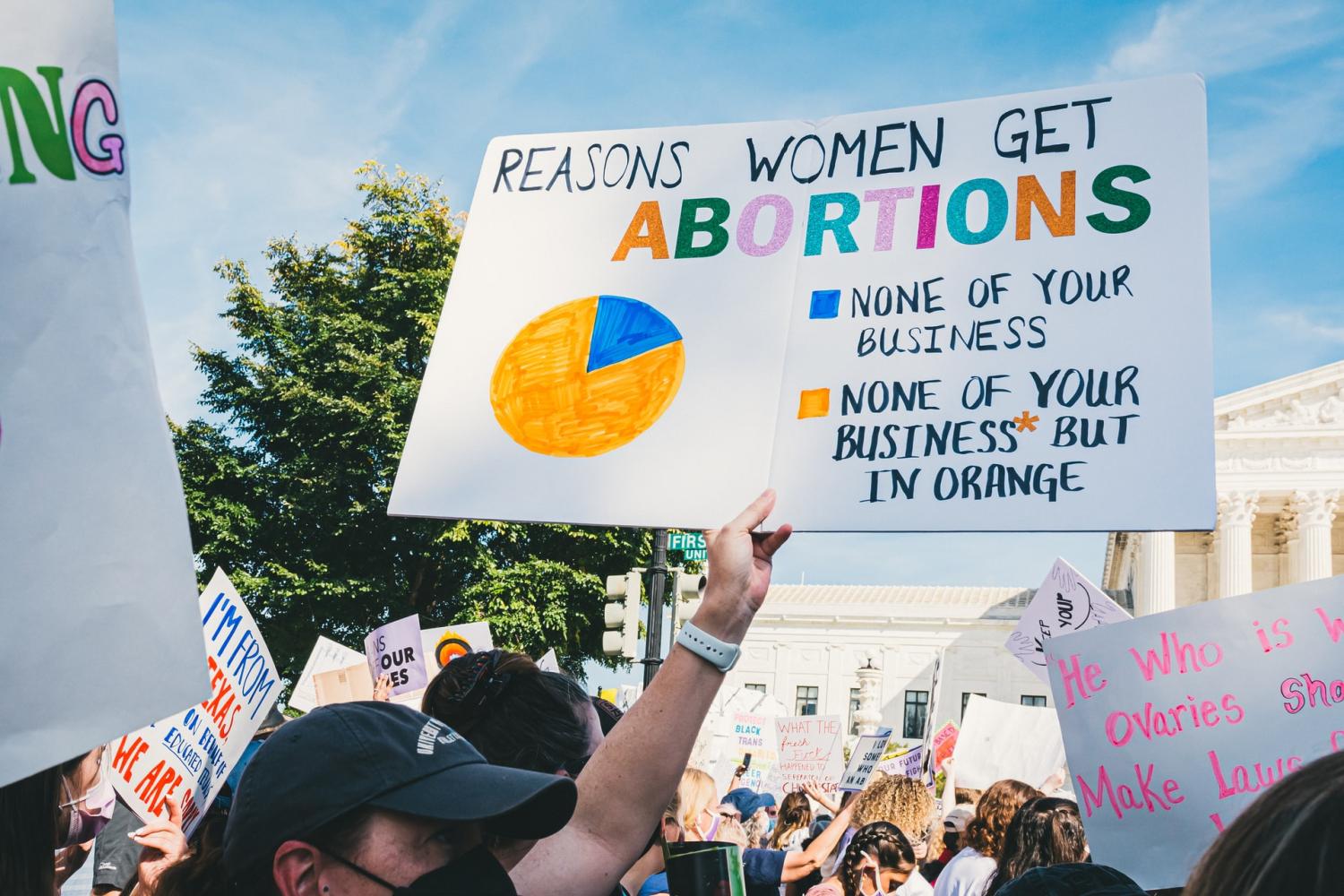
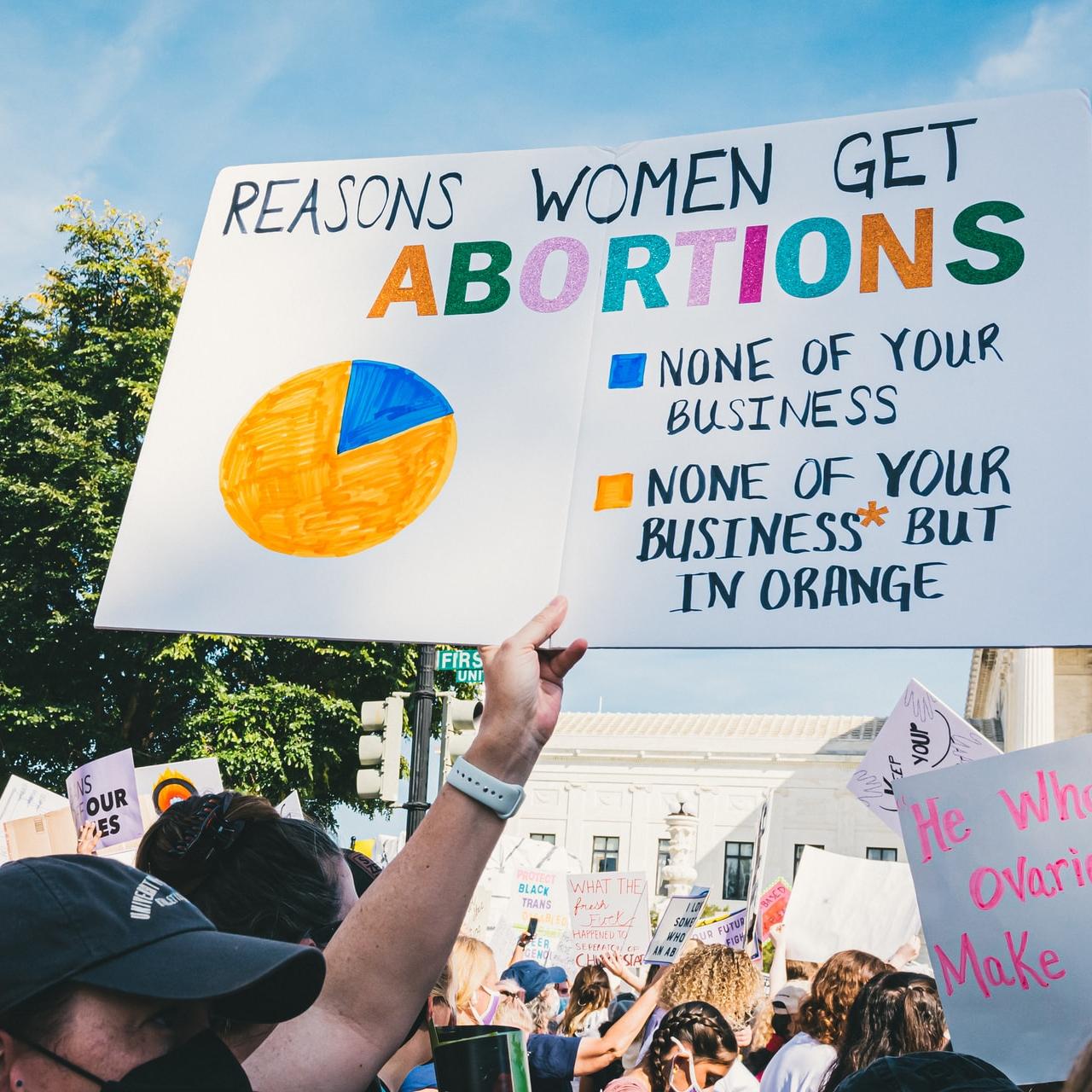
The U.S. Supreme Court’s decision in the recent Dobbs v. Jackson case will bedevil U.S. corporations for years to come, if not entire generations. The Court empowered state governments to identify, track, monitor, judge and persecute every person capable of carrying a pregnancy, regardless of their age or intentions. Business leaders can help repair the damage by supporting state and federal legislation that protects abortion rights. However, in order to do that, first they will have to dig themselves out of the partisan hole they created.
Say it again: Out-of-state travel was never the solution
Some businesses have scored points in the court of public opinion by offering to pay out-of-state travel benefits for employees seeking abortions.
The travel benefits trend began with Salesforce and several other companies last fall when Texas passed a draconian, vigilante-centered abortion law. The travel strategy gathered steam after last month’s Dobbs decision, which empowered additional states to set new restrictions in motion.
Travel benefits sound good on paper, but they don’t remove the threat of universal tracking and monitoring. In addition to phone records and internet searches, pregnancy police states have a wide variety of tools at their disposal — from period apps and social media to travel bookings and license plate readers. All of these can be deployed in the service of monitoring everyone with a uterus.
Corporations that offer travel benefits also appear to be blissfully ignorant of the fact that Republican legislators and their allies are already planning a nationwide abortion ban. That would put an end to the travel strategy, unless corporations are willing to pay for trips to Canada, Mexico, Europe or other nations where pregnancy management is still the right of the pregnant person.
Pushing health care resources to the limit
For the time being, out-of-state travel is still an option. However, the travel strategy is already beginning to crack at the seams, as resources in pregnancy-rights states strain under the influx of new patients seeking care, regardless of whether or not their health plan covers it. As more state governments adopt the mantle of pregnancy police, tens of thousands more pregnant people will seek care outside of their home states.
Abortion providers and their allies in pregnancy-rights states have been gearing up for a flood of new patients, but it is only a matter of time before triage and delayed care set in.
For example, California, Oregon and Washington have formed a three-state pregnancy rights collaboration called the Multi-State Commitment to Reproductive Freedom pact. It covers a range of legal issues cascading from the new abortion bans, in addition to serving as a platform for ramping up abortion access for out-of-state travelers.
Editor's note: Be sure to subscribe to our Brands Taking Stands newsletter, which comes out every Wednesday.
Last week, though, The Mercury News drew an ominous picture of the state of play in California and elsewhere. Reporter Lisa M. Krieger detailed a strong network of stopgap measures among clinics and their allies in California, aimed ensuring seamless care for those seeking abortions from out of state. However, she also took note of obstacles in the way of permanently expanding the state’s ability to take in more patients.
Part of the problem involves dealing with an increase in more complicated cases, potentially leading to delays in care that further exacerbate an already fraught scenario for the patient.
“Medical academics at UC San Francisco, UCLA and other hospitals are arranging to serve more high-risk patients with complex medical conditions who can no longer get care in their home state,” Krieger reported. “They’re bracing to see women with late-term pregnancies, whose care was delayed due to lack of funds or transportation.”
Another long-term issue involves access to training. Krieger notes that health professionals can no longer train on abortion in their home states, and they are relying on states like California to step in.
“The reversal of Roe also means that there will be fewer U.S. doctors who are trained in abortion,” she wrote. “After the Texas restriction last September, UCSF’s Bixby Center for Global Reproductive Health trained several medical residents from the state and is now trying to coordinate training for 50 more.
Over the long term, California and other pregnancy-rights states will need to build and staff new clinics. However, that is no simple matter, even in states where pregnancy rights are protected. After all, every “blue” state has very “red” areas. For example, Krieger points out that Planned Parenthood was planning to expand in Visalia, California, until community opposition kicked in.
What’s a business leader to do on abortion rights?
The Dobbs decision has upended a whole generation of gender equality and diversity, equity and inclusion programs in the wink of an eye. Corporate leaders have only themselves to blame, through their financial support for state and federal candidates who pledge to support anti-abortion policies, primarily on the Republican side of the aisle.
It is no coincidence that each of the six Supreme Court justices who decided the Dobbs case were appointed by Republican presidents. State laws restricting abortion have also passed largely along partisan lines, with an assist from corporate funding for GOP candidates.
In addition to cutting off the money pipeline to Republican candidates, corporate leaders also need to re-think their support for GOP-affiliated political organizations.
Earlier this week, independent journalist Judd Legum of the newsletter Popular Information analyzed corporate donations to the Republican Governors Association, an organization that is actively working to install more Republican, anti-abortion governors in states across the U.S.
Legum notes that RGA has already reserved millions in ad time to elect Republican governors in states where pregnancy rights have been dismantled or are at risk, including Arizona, Michigan and Florida.
Legum cites Microsoft ($250,000 in March 2021), AT&T ($250,000 in June 2021) and CVS ($280,000 since 2021) as contributors to the RGA campaign coffers, as well as Amazon ($425,900), Cigna ($141,800), Comcast ($250,450), Google ($125,450), Intuit ($100,000) and Wells Fargo ($101,800).
Each of these firms, Legum points out, are among those offering travel benefits for abortions.
Business leaders can help make the case for pregnancy rights as a matter of national policy by supporting the policies of President Joe Biden, who signed an executive order on Monday that empowers the U.S. Department of Health and Human Services to ensure that practitioners observe the right to emergency care under federal law. The new order supports a detailed HHS action plan aimed at protecting access to abortion.
In addition, leaders of U.S. companies can also cheerlead for open access to contraceptive pills and abortion pills. The Food and Drug Administration approved the over-the-counter sales of the emergency contraceptive Plan B back in 2006. Now, the French company HRA Pharma is seeking FDA approval for over-the-counter sales of its Opill contraceptive pills. If the FDA sets a precedent in that area, over-the-counter approval for medications that terminate pregnancies, such as the widely used combination of mifepristone and misoprostol, could follow.
However, business leaders cannot rely on others to act on their behalf. As demonstrated by the Supreme Court's recent decision in the West Virginia v. EPA case, the six right-wing justices have set themselves up to tear down decisions made by federal agencies and undermine the president’s ability to enforce federal laws through executive order.
Business leaders have boxed themselves into a corner, along with the entire country. The only solution now is to stop pretending that “both sides” have an equal say in pregnancy rights. Business leaders who claim to support human rights must start putting their corporate money where their mouths are. They must support a Democratic majority in Congress that is strong enough to codify pregnancy rights into federal law.
Anything less than concrete, partisan action on behalf of Democratic candidates for the upcoming midterm elections is just the same old corporate hot air, blowing stopgap solutions that are doomed to fail.
Image credit: Gayatri Malhotra via Unsplash
How Sri Lanka Became Embroiled in an Organic Farming Crisis


A view of the heritage site Sigirya Rock from rice fields in central Sri Lanka
At the center of the political and economic turmoil in Sri Lanka lies an unlikely culprit: organic agriculture.
Until last year, Sri Lanka, a largely upper-middle income island nation south of India, was largely self-sufficient in food production. Much of the nation’s success in agricultural production was, like most farms around the world, aided by the use of synthetic fertilizers and pesticides. Last year, in an attempt to boost soil health and halt the progression of a kidney disease killing local farmers that was linked by some sources to agricultural chemicals, the president of Sri Lanka, Gotabaya Rajapaksa, imposed a synthetic fertilizer and pesticide ban overnight.
Sri Lankan farmers were not allowed time or resources to transition their fields to organic practices, nor did the government provide access to natural fertilizers. Local production of natural fertilizers had not increased, and no extra nutrients were imported.
Yields for the harvest immediately following the ban fell precipitously, between 20 percent and 70 percent depending on the crop. Rice yields fell by almost half, and key exports like tea, rubber and coconut plummeted. By December 2021, when it was clear that the human health impacts were disastrous, the country’s president decided to end the fertilizer ban.
Although Sri Lanka's government reversed the ban in December, the government did not reinstate the subsidies that traditionally aided farmers in purchasing agricultural chemicals. Therefore, most farmers could not afford the fertilizers they had previously relied upon, and the cost of agricultural inputs skyrocketed due to scarcity. As a result, only a small fraction of the country’s farmers fully planted their fields in the spring.
The situation has become so dire that the government is allowing public workers to take Fridays off from work in order to tend to their home gardens.
The depletion of inventory at food stores across Sri Lanka comes at an especially terrible time, as grain prices around the world are soaring due to the war in Ukraine. The price of fertilizers globally has skyrocketed, further escalating when Russia placed a temporary ban on fertilizer exports earlier this year. Fuel shortages in Sri Lanka have doubled the cost of running a tractor. Double-digit inflation is plaguing Sri Lanka, and many farmers report that they cannot afford the materials needed to restart cultivation.
The agricultural and economic turmoil across the country has turned into a perfect storm of food insecurity. Child hunger is now at 15 percent, and over 500,000 Sri Lankans have fallen into poverty in the last two years. The economic crisis led to a political one, and in response to mass protests, President Rajapaksa announced his resignation, effective tomorrow.
So, in the midst of this disaster, is organic agriculture to blame?
Sustainable agriculture is an interconnected system of practices, developed over time. For organic farms to be successful, they must have healthy soil and ecosystems built up over years, as well as markets capable of paying the premium price for organics, associated with economic risk and what can at times be lower yields. If an entire industry is forced to suddenly abandon the use of non-organic chemical fertilizers without necessary support, then the sector risks collapse.
Still, the sudden food crisis in Sri Lanka should not be blamed on organic agriculture. Instead, it highlights the delicacy of interconnected systems, as emphasized in bedrock sustainable agriculture principles. For example, traditional, smaller-scale and diversified Sri Lankan agriculture was gutted by the British in the 19th and early 20th centuries to make way for monoculture plantations. Then, just 20 years after Sri Lankans won their independence in 1948, local ecosystems were further disrupted with the planting of the first oil palm plantations.
Transitioning from conventional agriculture to a more sustainable method of production takes time to implement properly and to ensure yield stability, especially when transitioning land damaged by monoculture and degraded ecosystems. Large-scale transitions are achieved incrementally to prevent yields from plummeting and putting farmers out of business.
For agriculture to be truly sustainable, the sector must center its practices across farmer livelihoods as well as their quality of life. In this case, the Sri Lankan government’s creation of haphazard, overnight declarations without providing adequate access to planning resources, organic agricultural inputs or educational materials quickly became a recipe for disaster.
Image credit: Tom Nicholson via Unsplash
How Employers Can Lead the Electric Vehicles Cheerleading Team


Ford's 2022 Mustang Mach-E Premium, ice white edition
A new survey from Consumer Reports indicates that interest in electric vehicles (EVs) is accelerating. However, large chunks of the car-buying public are still unconvinced. The pace has to pick up in order to cut carbon emissions as quickly as possible. Rather than standing on the sidelines, employers can take some guidance from the new survey, and help encourage their employees, clients and customers to make their next car purchase a zero-emissions one.
Gas prices are up, and so is the buzz over electric vehicles
The new Consumer Reports survey is the largest-ever survey of its kind undertaken by the well-known consumer rights and information organization. The nationally representative sample includes more than 8,000 adults.
Over and above demographic differences, the survey revealed an overall upswing in the willingness to buy an all-electric vehicle over the past two years. Back in 2020, a similar survey found that only 4 percent of drivers answered “definitely” when asked if they would buy or lease an all-electric car. That answer more than tripled in the new 2022 survey, to 14 percent.
In the new survey, Consumer Reports also identifies a significant number of fence-sitters who are open to persuasion.
“…More than a third of Americans would ‘definitely’ or ‘seriously’ consider buying or leasing an electric-only vehicle if they were to buy a vehicle today,” the organization explained.
The new survey was taken between January 27 and February 18 last winter, when gas prices averaged from $3.42 to $3.52 per gallon. Prices rose to an average of approximately $5.00 per gallon from spring into the summer. If the survey were undertaken at the higher price point, it’s quite possible that the affirmative answers would be even higher.
Why don’t more people buy electric vehicles?
The upward leap in consumer interest from 2020 to 2022 is encouraging. Awareness about the cost of owning electric vehicles is also increasing. According to the survey, about one-third of drivers are aware that it costs less to charge an electric vehicle than fuel up a gas-powered car. About the same percentage are aware that overall lifetime costs are also lower for electric vehicles, including maintenance and repair.
Still, Consumer Reports points out that only 2 percent of Americans currently own or lease an all-electric vehicle. Many drivers are still put off by charging logistics, range anxiety, and cost, even though some all-electric models now cost less than many new cars.
“The 2023 Chevy Bolt now starts at just $26,595—putting it around $20,000 less than the price of the average new car,” Consumer Reports observes. “And for many EVs, the true purchase price may be even less than the sticker price because of federal, state, and even power utility incentives. Almost half of Americans (46 percent) are unaware that there are incentives available.”
In addition, Consumer Reports suggests that many EV-resistant drivers are also unaware that operating and maintenance costs are generally lower for electric vehicles, not higher.
“…Just over half of Americans (52 percent) who weren’t already committed to buying an EV said the costs of buying, owning, and maintaining it would prevent them from leasing or purchasing one,” the report’s authors further explain.
How employers can help accelerate the adoption of electric vehicles
Overall, the survey strongly suggests that driver outreach and education could make a significant difference in EV adoption, and that is where employers can help.
For example, the survey found that drivers who have already experienced an EV, either as a driver or a passenger, are more like to express interest in buying one. Employers who already have an EV in their fleet could schedule times for their employees to take a test drive or even provide time off for employees to test drive an all-electric model at a local dealer.
Employers can follow up by providing their employees with information on any applicable state or federal rebates.
They can also help raise awareness about public and workplace charging station availability. That could help persuade employees who live in housing that does not accommodate private charging stations, or who simply want to avoid the expense of installing their own private charging station.
In some areas, utilities are beginning to offer EV owners incentives for scheduling their charging times at off-peak hours. Employers can make sure their employees are aware of these incentives, too.
Some automakers are beginning to market bi-direction charging, which means that EV owners can use their vehicle battery as a zero-emission emergency power generating station. Employers can help ensure that employees are aware of this capability, especially in areas prone to power interruptions.
Learn from the experts
There is no need for employers to reinvent the wheel on EV promotion. A body of knowledge is already available, particularly in cities that have already partnered with local utilities and other stakeholders to encourage EV purchasing or leasing.
For example, in July 2018, the city of Columbus, Ohio set up a fund to provide employers with additional rebates to incentivize employee EV purchasing or leasing. The program launched with Alliance Data and AEP Ohio as the first two employer partners.
Based on its experience with the two rebate projects, Columbus recommends the practice as an effective pathway for encouraging EV adoption among employees.
However, employers also need to take employee demographics into consideration. Participation in the Columbus rebate program followed the pattern in the new Consumer Reports survey: Most of the employees who requested rebates fit the higher-income, higher-education demographic. Employers who want to reach a broader demographic will need to tailor their rebate program accordingly.
Columbus also emphasizes that a successful rebate program involves careful, holistic planning.
“As with any benefit or workplace program, internal coordination and streamlined processes are key to success,” the city explains.
The elements of a successful program include a team-based approach to managing the program, along with a strong communications strategy including a dedicated FAQ web page and other internal platforms. A hassle-free tracking tool to process requests is another key element.
The city also recommends inviting community partners in to host presentations that provide facts and break down myths about electric vehicles. Employers can also partner with community organizations and dealers to host road tests.
The Consumer Reports survey found that workplace charging availability is not a leading issue for most drivers who are willing to purchase or lease an EV. However, Columbus’s experience suggests that demand for workplace charging will rise as EV ownership rises among employees.
“Our partners have seen increased demand for workplace charging stations after the number of associates driving electric increased,” the report explains.
The promotion of electric vehicles provides employers with a significant new opportunity to prove they are serious about sustainability. However, to achieve any real effect, employers must also be willing to put some honest work into the effort.
Image credit: Ford Media Relations
Gen Z and Millennial Fashionistas Grapple with Secondhand Fashion Over Conflicting Values


At first look, the ongoing surge in apparel thrifting and online resale appears to be a resounding win for the environment. With fewer barely-worn garments ending up in landfills, a lower overall carbon footprint and reduced water and fertilizer consumption, how could it not be? Of course, while all of those benefits are certainly a boon, there is a caveat. Instead of abating fast fashion, secondhand marketplaces have gotten in on the trade.
A tiny symptom of fast fashion is causing a huge problem
Thanks to the rush toward cost-saving synthetics prompted by the fast fashion industry, 62 percent of textiles are now man-made. This has resulted in a surge of microfibers, which by many accounts are the most common type of microplastics being released into our water systems. Worse yet, the synthetic material that sheds its fibers at the highest rate is also the most popular — with polyester losing fibers at a rate six times that of nylon. Synthetic textiles are responsible for 35 percent of the microplastics that end up in the earth’s oceans — and most of them likely got there from the wash cycle. A report funded by the Ocean Wise Conservation Association estimates that American and Canadian households alone contribute 3.5 quadrillion microfibers to oceans and freshwater systems annually. Broken down, they approximate that to an average of 533 million microfibers per year from each household.
Fast fashion shoppers are motivated by savings and convenience. Nearly three-quarters surveyed in one report agreed that the items were a good deal while a little over half said they were motivated by how quick and easy it is to buy from fast fashion retailers. Another 20 percent admitted to feeling as though they had to keep up with the latest trends on social media. Aja Barber, a stylist, consultant and author, has been quoted by Yahoo News as saying, “Right now, the fashion industry pumps out 150 billion garments a year, [but] the human population is only 7.9 billion. And 50 percent of our planet cannot afford to participate in this system.”
Many consumers are still not completely unaware of the effects their shopping habits have on the environment. Half of fast fashion buyers recognize that the industry is bad for the planet, while a whopping 74 percent concede that their purchases are part of the problem. The pressure to be on-trend and post a new outfit each and every day clashes with the self-professed values of younger generations — leaving Gen Z and millennial fashionistas to grapple with the industry’s disposable nature.
Turns out, secondhand doesn’t necessarily solve the sustainability problem
They’ve done so by creating a circular economy of sorts. One that involves both thrifting and fast fashion. More than 60 percent of Gen Z and millennial shoppers check secondhand retailers, whether online marketplaces or brick and mortar thrift shops, before buying a new item of clothing, compared to 41 percent of all shoppers. Driven largely by younger buyers, the market for used apparel is expected to expand 127 percent by 2026. At the same time, those huge Shein hauls have to go somewhere and one popular place is the donation box.
Many longtime thrifters are complaining that the glut of fast fashion items ending up in secondhand stores is making it hard if not impossible to locate the quality items they are used to finding. Instead of name brands and quality items made from natural fibers, the racks have been overtaken by items from H&M and Zara, among other fast fashion brands. And while a possible second life via the thrift shop is preferable to chucking the clothing in the trash, the more often that the items are washed the more microfibers they will release into waterways.
Rethinking how society views fashion
Like the transportation and food industries, the fashion industry operates on principles of unsustainability — as in encouraging overconsumption and making it harder and more expensive to do the right thing — while consumers take the ethical fall. Caught between their values on one side and social expectations on the other, many Gen Z and millennial fashionistas have done their best to navigate a system that makes it impossible for them to have both.
Nevertheless, if they are going to truly live up to their ideals, young consumers will need to reimagine how to be on-trend while spending more on individual items. Secondhand marketplaces can enable this, but not if they are continually flooded with garments made from synthetic materials. It is up to the fashion industry to change the way it does business. By focusing on natural fibers and resale marketplaces, the industry can do its part to stop the flow of microplastics into our oceans.
Image credit: Fallon Michael via Unsplash
Startup Takes the Guesswork Out of Fleet Electrification
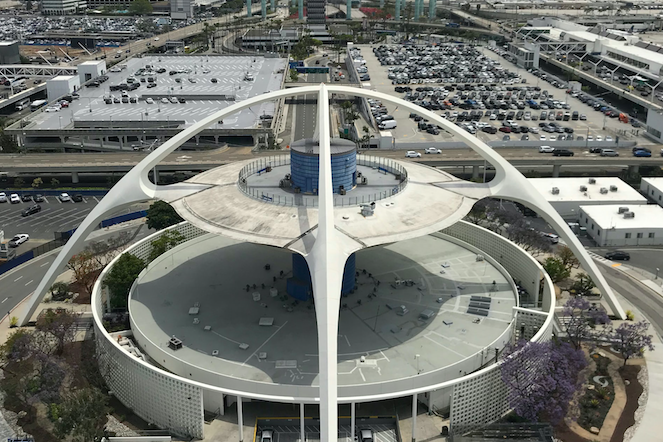

Los Angeles International Airport, as seen from the LAX Control Tower, January 2021
Even though fuel prices are beginning to fall, the expense of refueling, repairing and maintaining a fleet of gas or diesel vehicles is still a major headache for businesses. Fleet electrification can solve all three problems at once, and there is no need for fleet managers to reinvent the wheel. A growing number of specialty companies are beginning to offer fleet electrification as a service with no up-front investment.
The fleet electrification advantage
Electric vehicles (EVs) still cost more up front than comparable gas or diesel vehicles, mainly due to the expense of the battery pack. Fleet owners don’t have to wait for the cost of EV batteries to fall, though. EVs involve less maintenance and repair than comparable gas or diesel vehicles, and charging a battery costs far less than filling a fuel tank. As a result, the total cost of owning an EV – including fuel plus maintenance and repair over time — can be equal to or less than owning a gas or diesel vehicle.
EVs provide other advantages, too. Because they are emissions-free and practically noise-free, they can improve community relations along residential routes, and they can enhance worker health and workplace well-being.
In addition, EV charging stations can eliminate the infrastructure costs, environmental impacts and potential hazards involved in fueling infrastructure, including pumps and underground storage tanks.
Another emerging benefit is the ability to participate in community-wide grid management initiatives. A growing number of utilities are recruiting EV owners to deploy their batteries in virtual power plants that help shave down peak use periods and thereby enhance grid reliability and stability. EV batteries can also be deployed on an individual basis as emergency power generators.
Above all, EVs provide businesses with another important tool in their decarbonization toolkit. In an era of heightened awareness about the impacts of climate change, fleet electrification enables businesses to demonstrate they are part of the solution.
Leaping the up-front fleet electrification cost hurdle
The total cost of owning an EV is attractive, but obstacles remain. To make the switch, fleet managers have to invest in new vehicle technology and charging infrastructure, and they have to learn how to juggle charging times along with route planning and scheduling.
The startup Zeem Solutions provides a good example of how innovators are mining these challenges for new opportunities. Zeem has just launched its first EV depot near Los Angeles International Airport. It’s a turnkey solution with no up-front costs to the fleet manager.
For a flat monthly fee, Zeem provides fleet managers with electric trucks, cargo vans, transit shuttles and other vehicles according to their needs, along with a facility that includes fast-charging stations, parking and a break room for drivers. Including EV charging, maintenance and insurance along with the cost of leasing the vehicles, Zeem calculates that its flat-fee system is less than the cost of owning a gas or diesel fleet.
The choice of the Los Angeles Airport location for the initial facility is no accident. Of all the opportunities for fleet electrification, electric fleets at transportation hubs — including seaports and rail yards as well as airports — are the most impactful in terms of benefits to local communities.
“By operating zero-emission EVs, fleets benefit from a quiet and clean ride for drivers and passengers as well as improved air quality for the communities they serve, including historically disadvantaged communities near transportation centers and freight corridors where Zeem Solutions’ EV depots will be located,” the company explains.
Expanding to fill demand for EVs
Zeem anticipates that a growing number of fleet managers will be eager to adopt a service that provides immediate bottom-line and community relations benefits without a huge capital investment. The company has already embarked on a massive expansion plan in partnership with LAZ Parking Realty Investors, assisted by a $50 million capital investment from affiliates of the firm ArcLight Capital Partners.
The LAZ Parking connection provides a platform for rapid expansion. The company operates more than 3,500 parking locations in hundreds of cities across 39 states, and bills itself as the fastest-growing contract parking operator in the US. Its Realty Investors branch will provide Zeem with extensive experience in site acquisition and construction for its planned network of EV fleet hubs.
An ambitious showcase for fleet electrification
As for Zeem’s new EV hub at the Los Angeles Airport, that is no pilot project. EVs and charging stations are not a new thing anymore. They are proven technologies with widespread adoption.
The new EV hub launched last week with almost 100 EVs available for lease, along with 77 fast-charging ports. The facility also includes several dozen Level 2 chargers for use when longer charging times can be scheduled. Zeem anticipates that it will be the largest privately owned EV charging facility in the U.S. when operating at full capacity.
That scale is a good fit for Los Angeles Airport, which claims it is the second-busiest airport in the U.S. and the fourth-busiest airport in the world.
The new hub is also a good fit for the sustainability plan issued by Los Angeles World Airports, which has set a timeline of 2045 for achieving net zero carbon emissions from LAX and Van Nuys Airport.
Now that the U.S. Supreme Court has limited the ability of the EPA to decarbonize power stations, the climate action ball is in the hands of the private sector. The technology is in hand, the bottom-line benefits are clear and companies like Zeem have the solution.
Image credit: Ryan Miller via Unsplash